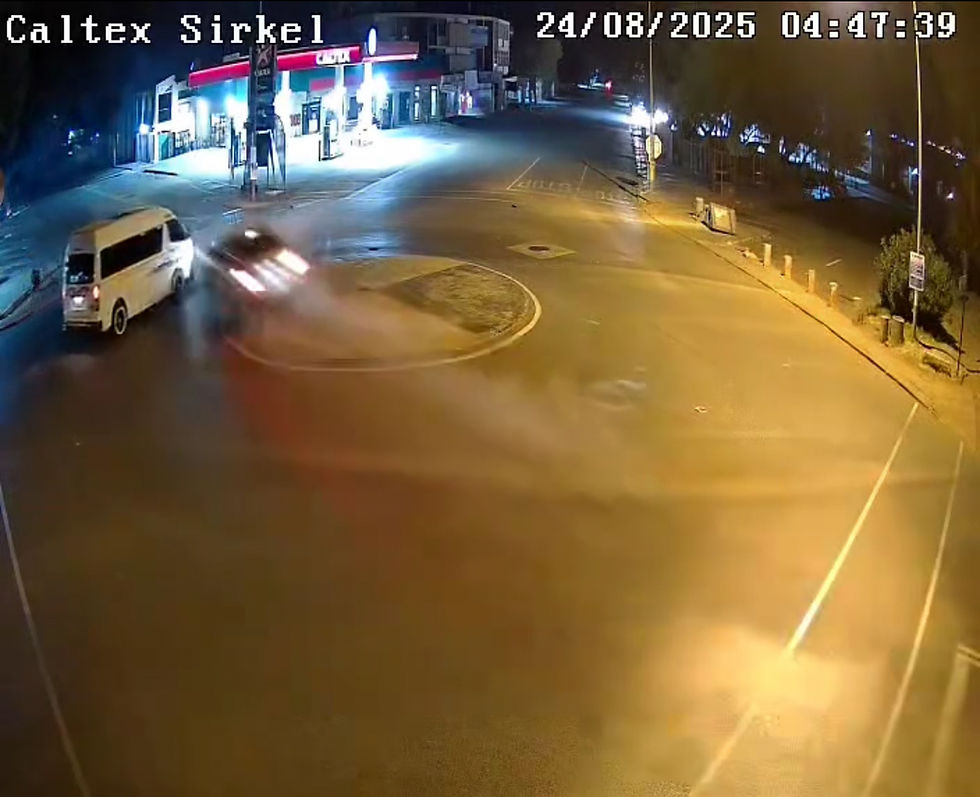WATCH: Brutal Head-on collision captured on dashcam.
- Prime Time
- Aug 25
- 2 min read
Updated: Sep 5
South Africa's extensive network of main roads, including the N1 and N2 highways, serves as vital arteries for transportation across the country. However, these routes are also sites of frequent and devastating head-on collisions, which contribute significantly to the nation's high road fatality rates. Despite ongoing efforts to improve safety, recent data and incidents highlight the urgent need for greater driver awareness and stricter enforcement to curb this trend.
In the 2024/25 festive season, spanning from December 1, 2024, to January 13, 2025, a total of 1,502 people lost their lives in 1,234 fatal crashes nationwide. While not all were head-on collisions, such crashes are a notable portion of fatal incidents. Historical data from the Road Traffic Management Corporation (RTMC) indicates that head-on collisions made up approximately 9% of fatal crashes in the fourth quarter of the 2022/23 financial year. More recent reports show an upward trend in overall road deaths, with human error identified as the root cause in around 80% of accidents.
Head-on collisions often occur on undivided highways where vehicles travel in opposite directions without physical barriers. Key contributing factors include excessive speeding, reckless overtaking, alcohol impairment, driver distractions, and fatigue. Environmental elements, such as poor road conditions, weather, and inadequate lighting, play a role in about 15% of cases, while vehicle issues account for roughly 21%. On undivided roads, additional risks like road curvature, reduced visibility, and heavy traffic composition exacerbate the severity of these crashes, often leading to killed or seriously injured outcomes in 72% of head-on incidents on routes like the N4.
Specific sections of major roads have earned notoriety for their high accident rates. The N2 highway, particularly between East London, Mthatha, and Kokstad, and the N1 from Mokopane to Polokwane, are among the deadliest, with frequent reports of head-on crashes due to unsafe passing maneuvers and high speeds. For instance, in August 2025, five individuals perished in a head-on collision between a truck and a light vehicle on the N2 near Amatikulu in KwaZulu-Natal. Earlier in January 2025, three people were killed in a similar crash on the N1 near Koppies in the Free State. In March 2025, a head-on on the N2 near Mandeni resulted in one death and multiple injuries. More alarmingly, over a single weekend in July 2025, 15 lives were lost in three separate head-on collisions, including incidents on the N18 near Mahikeng and the N4 between Swartruggens and Groot Marico.
These tragedies are part of a broader pattern. During the mid-festive period in December 2024, 512 fatalities were recorded, with many linked to high-traffic volumes on main roads. However, there are signs of progress; the 2025 Easter period saw a reduction in crashes from 209 in 2024 to 141, attributed to enhanced law enforcement and public awareness campaigns.
Experts emphasize that preventing head-on collisions requires multifaceted approaches, including better road infrastructure like medians and wide centerlines, improved vehicle maintenance, and stricter penalties for violations. The RTMC continues to monitor trends and deploy investigators to crash sites, urging drivers to prioritize safety amid increasing traffic on South Africa's highways. As the country grapples with a road fatality rate of about 22.2 per 100,000 people, addressing head-on collisions on main roads remains critical to saving lives.


























Impatience and total disregard/disrespect for lives, including their own people in their cars.